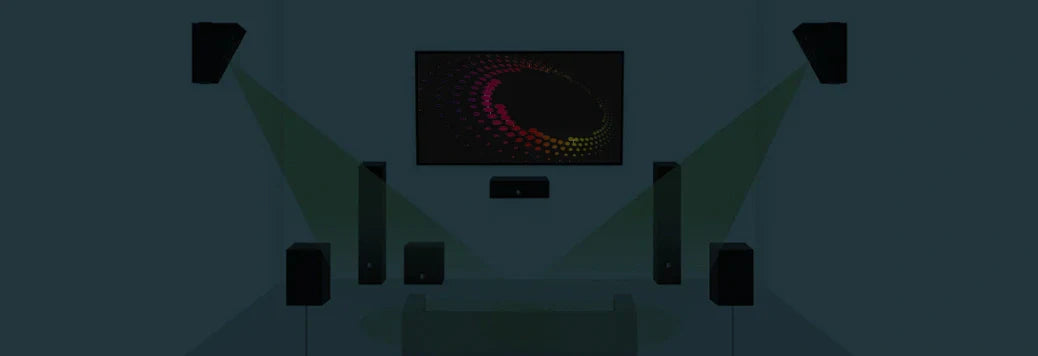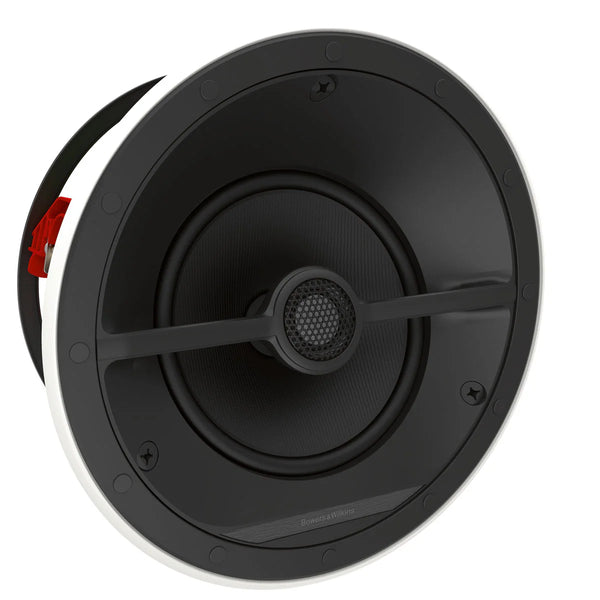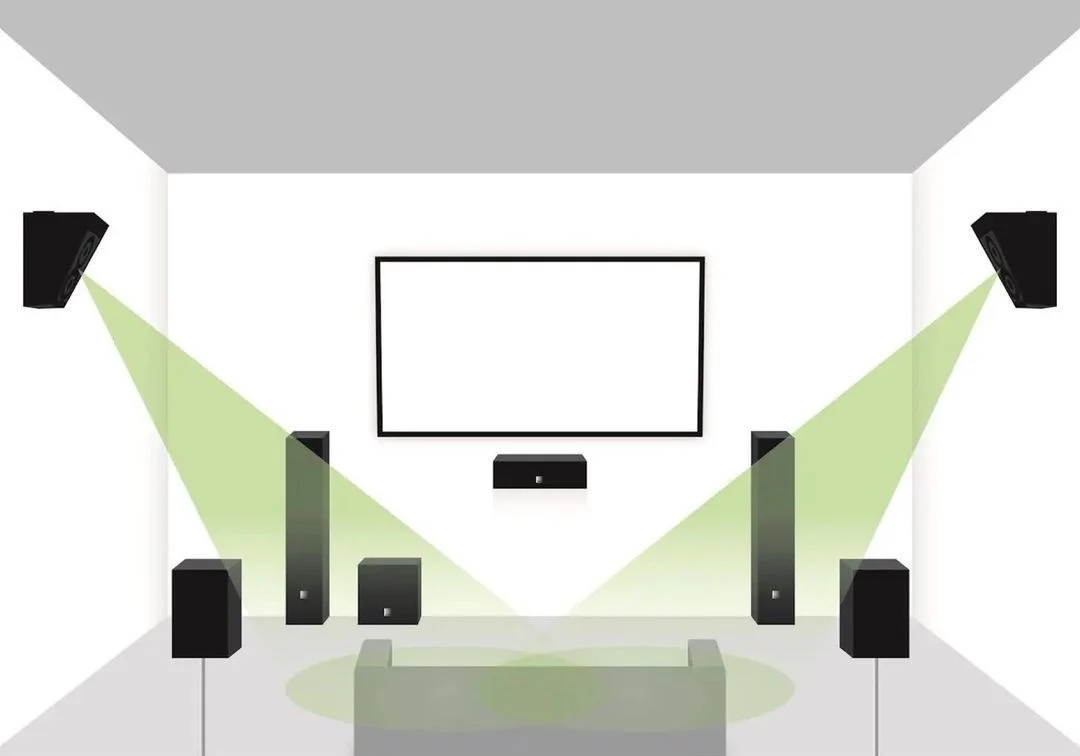
Imagine watching an explosive action sequence or a gripping dialogue scene in your luxury home theatre—but something feels off. The visuals are stunning, the screen size immense, yet the audio lacks precision. The voices don’t land where the characters are on screen, and the sense of immersion isn’t quite there.
This disconnect is often due to one subtle yet critical factor: speaker directionality. In premium AV setups, the role of angled speakers is gaining prominence—not just for aesthetic alignment but for acoustic accuracy and immersive realism. When speakers are thoughtfully angled towards the listener, sound waves travel more directly, preserving clarity, dynamics and spatial cues.
Let’s unpack how angled speakers elevate the home cinema experience from good to truly extraordinary.
The Fundamentals: Why Speaker Angling Matters
At the core of any high-performance sound system lies audio imaging—the ability to reproduce sound in a way that mirrors real-world directionality. For home theatres, this means dialogue should feel like it’s coming from the actor on screen, and effects like footsteps, rainfall or jet flybys should sound like they’re moving across the room.
This spatial precision depends heavily on speaker positioning and angling:
- Direct Sound vs Reflected Sound: When a speaker faces away from the listener or is parallel to walls, the sound reflects before reaching the ear, muddying detail and direction.
- Listening Angle: Speakers angled toward the primary seating area ensure that high-frequency detail—often highly directional—arrives accurately and promptly.
- Sweet Spot Expansion: Angling helps widen the optimal listening area, allowing multiple viewers to enjoy uniform sound quality.
For high-end AV enthusiasts, angling speakers is not just about aesthetics—it’s about unlocking the full potential of your soundstage.

Caption: Angled speakers help direct sound precisely towards the primary listening position to enhance clarity, immersion and spatial accuracy.
Key Advantages of Angled Speakers in Home Theatre Setups
1. Pinpoint Dialogue Clarity
The centre channel speaker—responsible for 70% of the dialogue—is often placed below or above the screen. An angled centre speaker directs the sound toward ear level, ensuring that speech feels lifelike and grounded on the screen, not under or over it.
- In-wall and under-display speakers often include built-in angled drivers to compensate for low placement.
- Without angling, voices may sound distant, misaligned or overshadowed by ambient effects.
2. Cohesive Surround Sound Imaging
Rear and side speakers are crucial for surround sound formats like Dolby Atmos, DTS:X or Auro-3D. Angling these speakers toward the seating area results in:
- Precise localisation of rear effects (e.g. footsteps behind you)
- Seamless transitions as audio pans from front to rear or left to right
- Heightened realism, especially in scenes with overhead or multi-directional effects
This is especially valuable in systems with ceiling-mounted or height channels that rely on angling to simulate vertical audio layers.
3. Minimised Acoustic Reflection and Distortion
Flat walls, glass surfaces and furniture can reflect sound waves unpredictably. Angled speakers reduce reliance on reflected sound by delivering a more direct acoustic path.
- Less reflection = more accurate timbre and clearer transient sounds (like gunshots or cymbals)
- Reduced risk of phase cancellation, which can dull certain frequencies
4. Better Integration in Architectural Spaces
In high-end interiors, aesthetics and acoustics must co-exist. Angled in-wall and ceiling speakers offer the best of both worlds:
- Flush-mounted designs with drivers angled behind the grille maintain design symmetry
- Ideal for setups where freestanding speakers are not an option
- Reduces the need for external speaker brackets or visible tilting mechanisms
This makes angled models an excellent choice for discreet AV installations in luxury homes.
When and Where to Use Angled Speakers

Image credit – Bowers&Wilkins
Knowing where and when to use angled speakers can significantly enhance performance without overcomplicating your setup. Here’s a breakdown:
| Speaker Position | Angling Recommended? | Benefit |
| Center Channel | Yes | Aligns dialogue with on-screen action |
| Front, Left & Right | Slightly | Focuses soundstage toward listening position |
| Surround Speakers | Yes | Improves rear imaging and movement tracking |
| Overhead Speakers | Yes | Aids in Atmos-style height effect localisation |
| Subwoofers | No | Low frequencies are omnidirectional |
Note: Many high-end speakers now come with adjustable mounts or internal driver angling, providing flexibility without compromising aesthetic integration.
Why Angled Speakers Matter Even More in High-Resolution Audio Systems
As high-resolution audio becomes mainstream in premium home cinemas, the margin for sonic imperfection narrows significantly. Lossless audio formats such as Dolby TrueHD, DTS-HD Master Audio and immersive codecs like Dolby Atmos demand precision in speaker alignment to realise their full potential.
- High-res audio tracks preserve spatial cues and dynamic subtleties that standard compression formats often discard. Angled speakers ensure these nuances are directed precisely toward the listener.
- With the growing adoption of object-based audio, where sounds move fluidly across a 3D space, angling becomes critical to accurately placing sonic objects within the soundstage.
- Audiophiles using dedicated DACs and reference-grade amplifiers will particularly benefit from angled speaker setups, which reduce phase errors and off-axis degradation—preserving the purity of the source material.
In essence, the more refined your source and amplification chain, the more essential correct speaker angling becomes to avoid bottlenecking the audio experience.
Also Read: The Role of Furniture in Home Theatre Design
Design Considerations for Angled Speaker Systems
1. Room Geometry and Layout
A wide or asymmetrical room benefits from angling to maintain sound coherence across varied seating positions. Custom angling helps equalise the experience.
2. Primary Listening Position (PLP)
Identify the PLP and angle speakers to converge toward that location. Toe-in front speakers slightly to centre the image.
3. Height and Elevation
For ceiling-mounted or wall-mounted speakers, angling helps bridge the vertical gap between speaker and ear level, improving vertical sound imaging.
4. Mounting Mechanisms
Invest in quality adjustable mounts or integrated-tilt designs to ensure precise and stable angling without resonance.
Final Thoughts: Angling for Audio Excellence
In the world of premium AV, small adjustments can make a monumental difference. Angled speakers may seem like a minor tweak, but their impact on dialogue clarity, surround immersion and spatial realism is profound. Whether you’re fine-tuning an existing setup or building a high-end home theatre from scratch, integrating angled speakers—or at the very least, angling your current ones correctly—is one of the most effective, low-footprint upgrades you can make.






